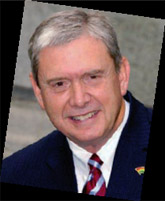English poet John Donne penned the line “No man is an island …” Indeed, no human being lives in total isolation from the influence of others. Those who successfully lead organizations have learned that they must rely on the best efforts of others to achieve success.
While there is general agreement with the critical role of people in any enterprise, the question of how to best facilitate consistent high performance has long been the subject of intense focus in both academia and business.
In the 1960s, Douglas McGregor of the MIT Sloan School of Management coined the terms “Theory X” and “Theory Y” regarding two typical managerial models of workforce motivation. These models are reflective of the fundamental attitudes of leaders regarding people.
Theory X is displayed by managers who see the average employee as lazy, lacking in ambition and drive and unconcerned with organizational purpose. These managers fundamentally see employees as motivated only by a paycheck. Based on these assumptions, such managers tend to rely heavily on micro-management and punitive policies. Although most managers indicate that they do not ascribe to Theory X premises, much of what is observed today sends the message that Theory X is still alive and well.
Theory Y leaders begin with the premise that people have a desire to perform well and that while compensation is important, job satisfaction is a function of much more than a paycheck. They believe that the organization must provide a safe environment that sustains high performance, engenders a sense of belonging, builds self-confidence and helps employees stretch to meet their personal potential.
The objective observer recognizes that not every employee will fit into either the Theory X or Theory Y definition. No matter how much we might want to believe that no one is lazy, there will be some who are. However, if we fundamentally believe in the positive attributes and desires of people, this belief quite often manifests itself in strong performance and workplace satisfaction.
It is interesting to look at the Theory Y attributes of those companies that are honored each year as being the “best companies to work for.” Fortune magazine has identified the characteristics of those companies:
1. A strong leader. Leadership strength can be defined in a variety of ways, but one attribute consistently mentioned is emotional intelligence. This is defined as a leader’s ability to recognize their own — and others’ — emotions and to adjust their behaviors in light of these recognitions. The result of emotionally intelligent leadership is less drama, stress and people problems, and more successful interpersonal relations.
2. A conviction of “rightness.” The organization has a cause, a quest, a crusade. This is the organization’s purpose — their “why.” Their people know this high purpose and they are encouraged to dedicate themselves to it every day.
3. Clear goals aligned with the organization’s “why.” Everyone knows the organization’s vision, mission and value propositions, and they feel personally committed to achieving those goals.
4. A well-defined reporting structure with empowerment to do the work required. Employees know to whom they report and their job descriptions, including accountability standards and metrics. The path to success is unambiguous.
5. Victory is always defined and within reach. Success targets are not set beyond a reasonable stretch. Achievement of success is celebrated with recognition and rewards.
6. Camaraderie. Leadership encourages belonging to “the team.” Loyalty is not only to the organization and its high purpose, but to one another. This is often reinforced by an open-office environment that encourages communication and facilitates work-flow.
7. Access to good food. Napoleon Bonaparte is quoted as having said, “An army marches on its stomach.” So it is today; access to delicious, nutritious fare not only contributes to health but also often enhances productivity by lessening the time away for lunch breaks.
8. Access to exercise. The ability — and encouragement — to break up the day with fitness activities enhances morale and wellness.
9. Competitive compensation. Clearly, great companies to work for are not all about the money. However, compensation must be competitive and monetary incentives are often employed.
Google (Alphabet) is the top honoree on Fortune’s “100 Best Companies to Work For in 2016.” Obviously, it has the resources to pursue the practices listed here in significant ways that many smaller companies do not. However, the financial success of Google and most of the other 99 firms listed clearly bears witness to the value of these practices. They leave no doubt that their leaders recognize that people are the most important component in achieving success and that a Theory Y leadership mindset brings about the best and most enduring results.
Richard Tyson is the founder, principal owner and president of CEObuilder, which provides forums for consulting and coaching to executives in small businesses.








